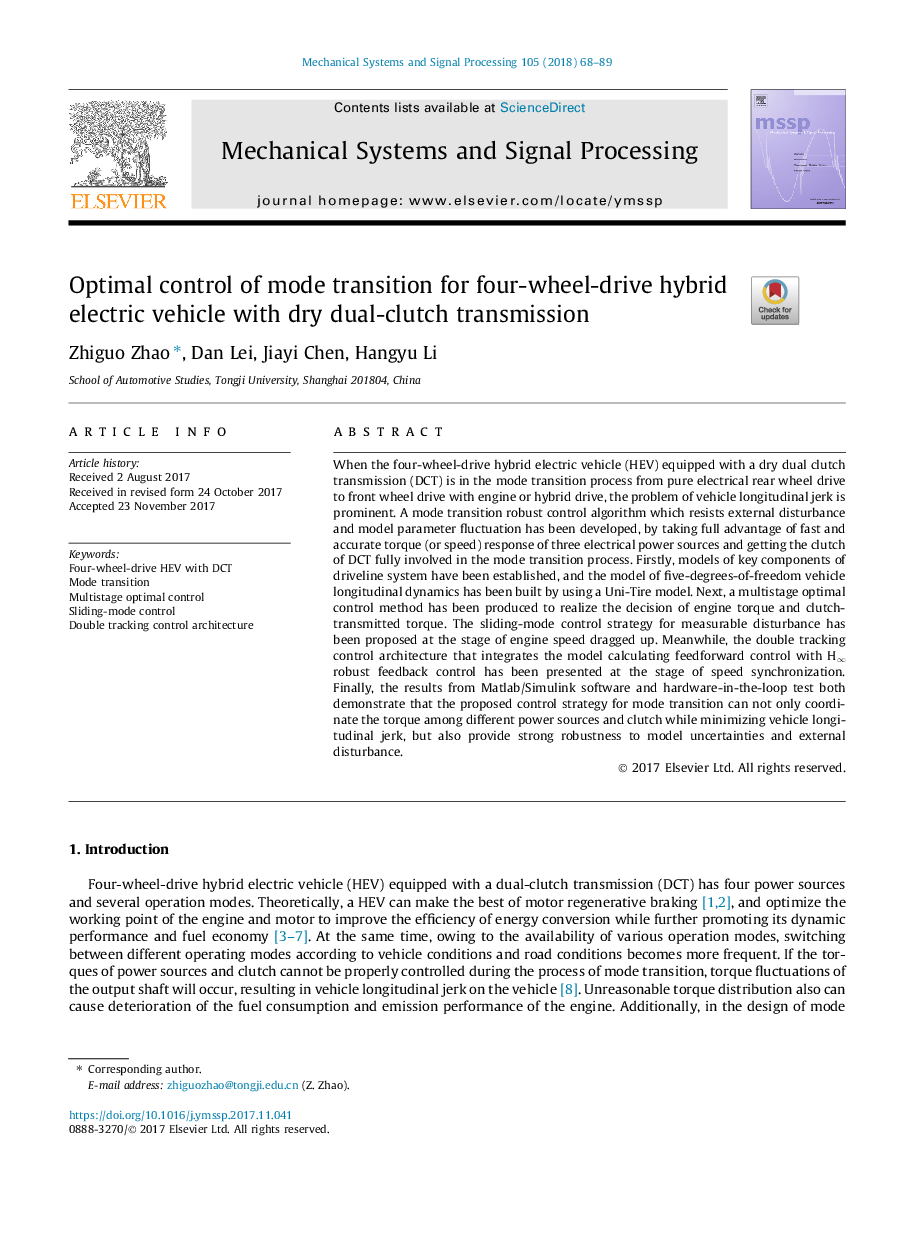| Article ID | Journal | Published Year | Pages | File Type |
|---|---|---|---|---|
| 6954410 | Mechanical Systems and Signal Processing | 2018 | 22 Pages |
Abstract
When the four-wheel-drive hybrid electric vehicle (HEV) equipped with a dry dual clutch transmission (DCT) is in the mode transition process from pure electrical rear wheel drive to front wheel drive with engine or hybrid drive, the problem of vehicle longitudinal jerk is prominent. A mode transition robust control algorithm which resists external disturbance and model parameter fluctuation has been developed, by taking full advantage of fast and accurate torque (or speed) response of three electrical power sources and getting the clutch of DCT fully involved in the mode transition process. Firstly, models of key components of driveline system have been established, and the model of five-degrees-of-freedom vehicle longitudinal dynamics has been built by using a Uni-Tire model. Next, a multistage optimal control method has been produced to realize the decision of engine torque and clutch-transmitted torque. The sliding-mode control strategy for measurable disturbance has been proposed at the stage of engine speed dragged up. Meanwhile, the double tracking control architecture that integrates the model calculating feedforward control with Hâ robust feedback control has been presented at the stage of speed synchronization. Finally, the results from Matlab/Simulink software and hardware-in-the-loop test both demonstrate that the proposed control strategy for mode transition can not only coordinate the torque among different power sources and clutch while minimizing vehicle longitudinal jerk, but also provide strong robustness to model uncertainties and external disturbance.
Keywords
Related Topics
Physical Sciences and Engineering
Computer Science
Signal Processing
Authors
Zhiguo Zhao, Dan Lei, Jiayi Chen, Hangyu Li,
